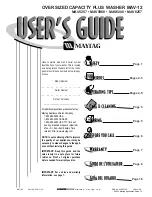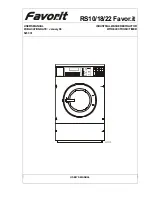
10
© Wilks-USA
TX750 / TX750i
Fill a suitable container with pressure washer detergent. Do not use washing up liquid as it contains salt. Please
follow the instructions on the container. Most automobile detergents are a combination of detergent and a wax
solution. Viscosity (thickness) of the detergent will increase in cold weather. It is recommended that this type of
detergent is diluted with water before filling the container. When using combination was and wax solutions, we
recommend that they are diluted before use. As a general guide we would recommend a dilution rate of 50/50.
Please follow the instructions of your detergent product for variations/specific requirements.
Note:
A thick viscous detergent will not flow freely from the detergent tank and the residue is likely to cause a
blockage in the system. After using the detergent facility it should be flushed thoroughly with clean water
to remove ANY trace of detergent. To activate detergent facility, fit the BLACK nozzle to the end of the lance.
Submerge the end of the detergent tank inlet hose in the container/solution. Suction and mixing will occur as
water flows through the pump. You may be required to fit the shorter of the supplied hoses in conjunction with
the black nozzle to create the required pressure to draw detergent.
Using the Detergent Facility
Before using the pressure washer to clean patio paving slabs it is advisable to test a small area first
as some paving slabs are manufactured from inferior materials and the use of a pressure washer
could damage the surface
If at any time the flow rate stutters or is inconsistent, release the trigger and switch OFF the machine. Squeeze
the trigger to release any pressure and check the jet end of the lance for any blockage. If a blockage is
suspected, use some wire (supplied to rear of instruction manual) to clean inside the nozzle.
Clearing a Blockage
Safety Instructions for the Engine
1. Before operating the engine, be sure to read all instructions carefully as injury or permanent damage to the
machine may occur.
2. Run the engine in a well ventilated area.
3. Ensure the appliance is at least 1 metre away from building walls or other equipment.
4. Keep the appliance away fro flammable liquids such as petrol.
5. Refuel in a well ventilated area with the engine switched off and avoid sparks or naked flames.
6. When refuelling, ensure that you do not over fill the tank.
7. If any fuel is spilled ensure it is cleaned up thoroughly before restarting.
8. Ensure the fuel cap is located securely.
9. The exhaust mufflers get very hot and will remain hot for some time after the engine is switched off.
10. Ensure the appliance is completely cooled before transporting or storing.
Fig.26
Fig.27








































